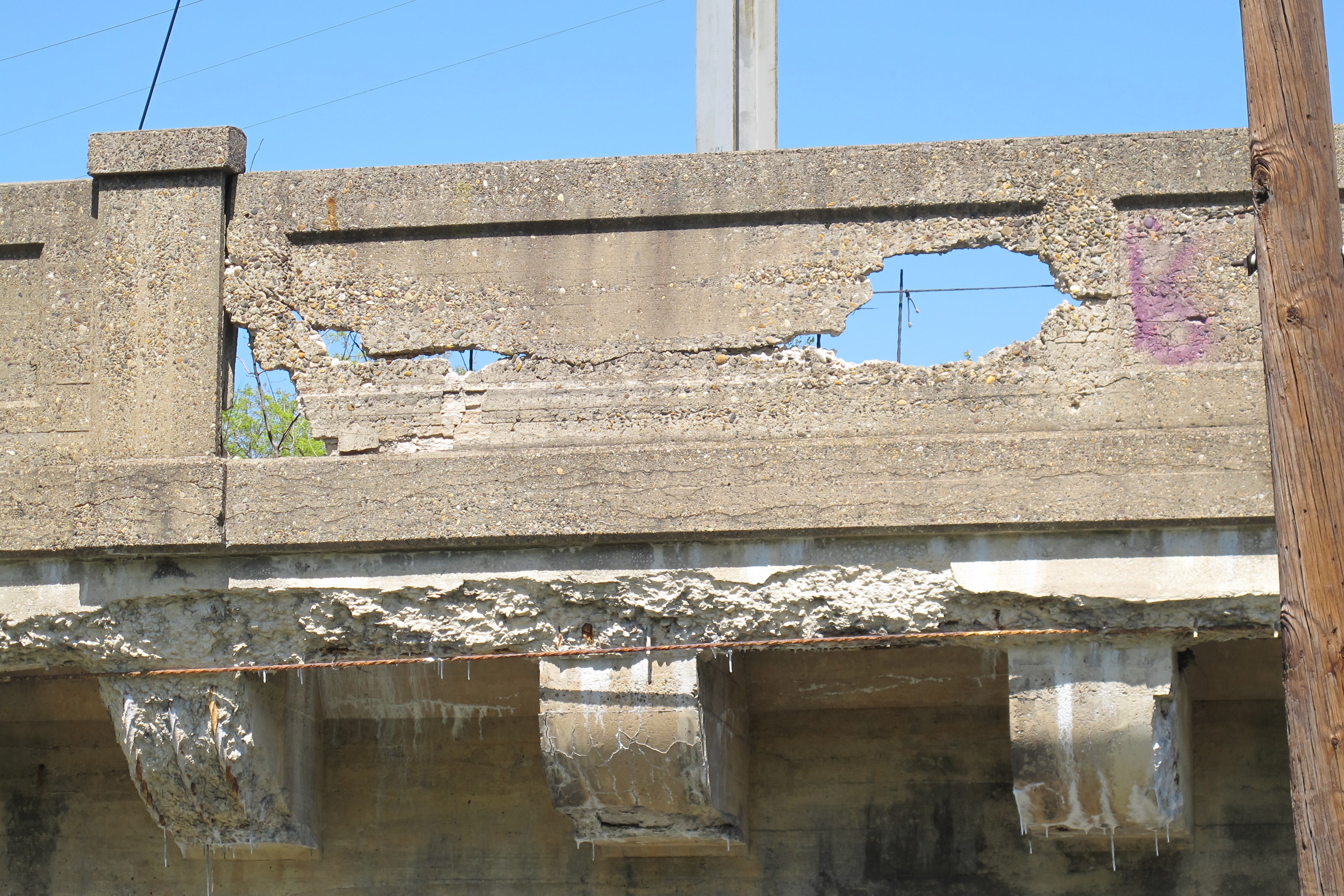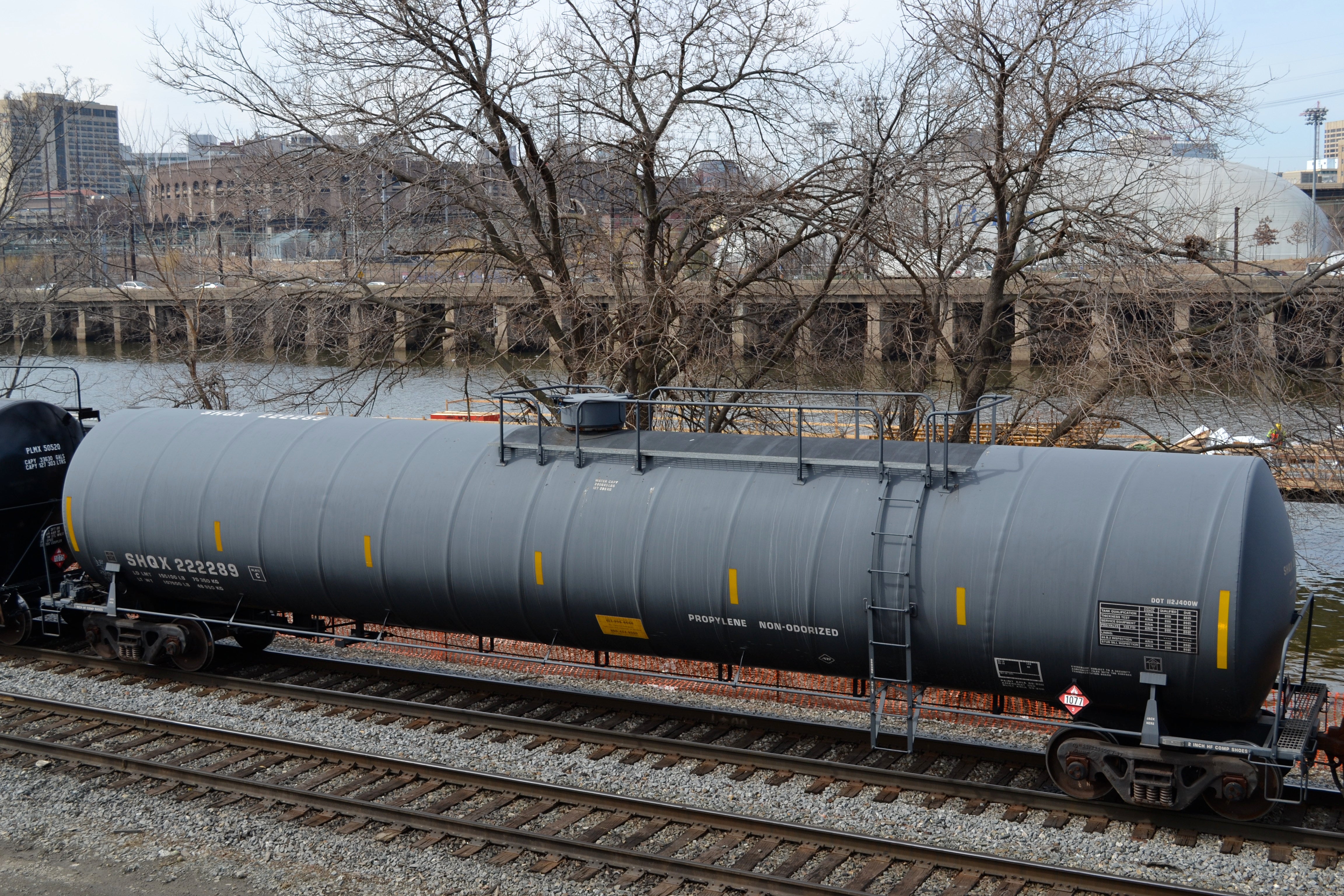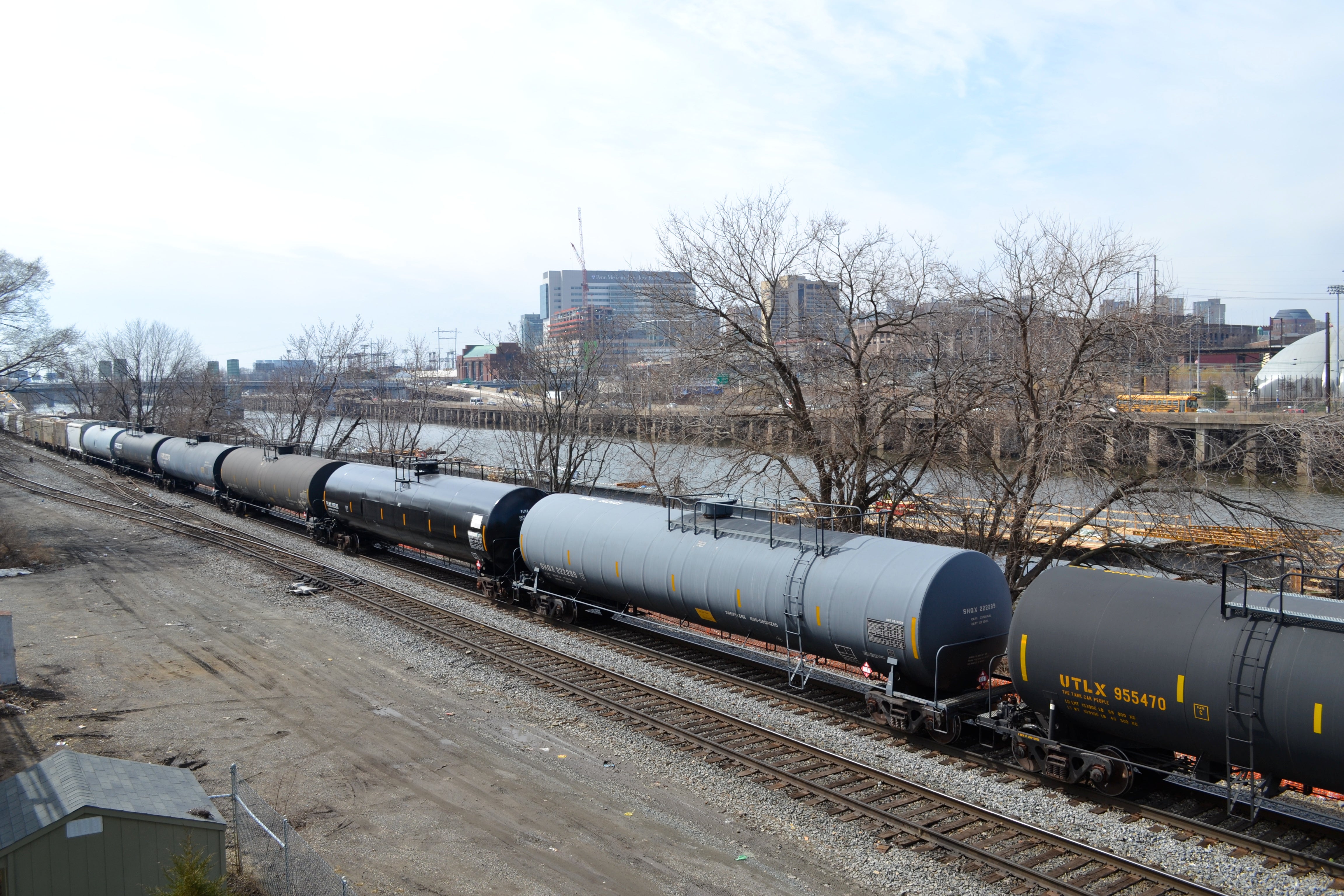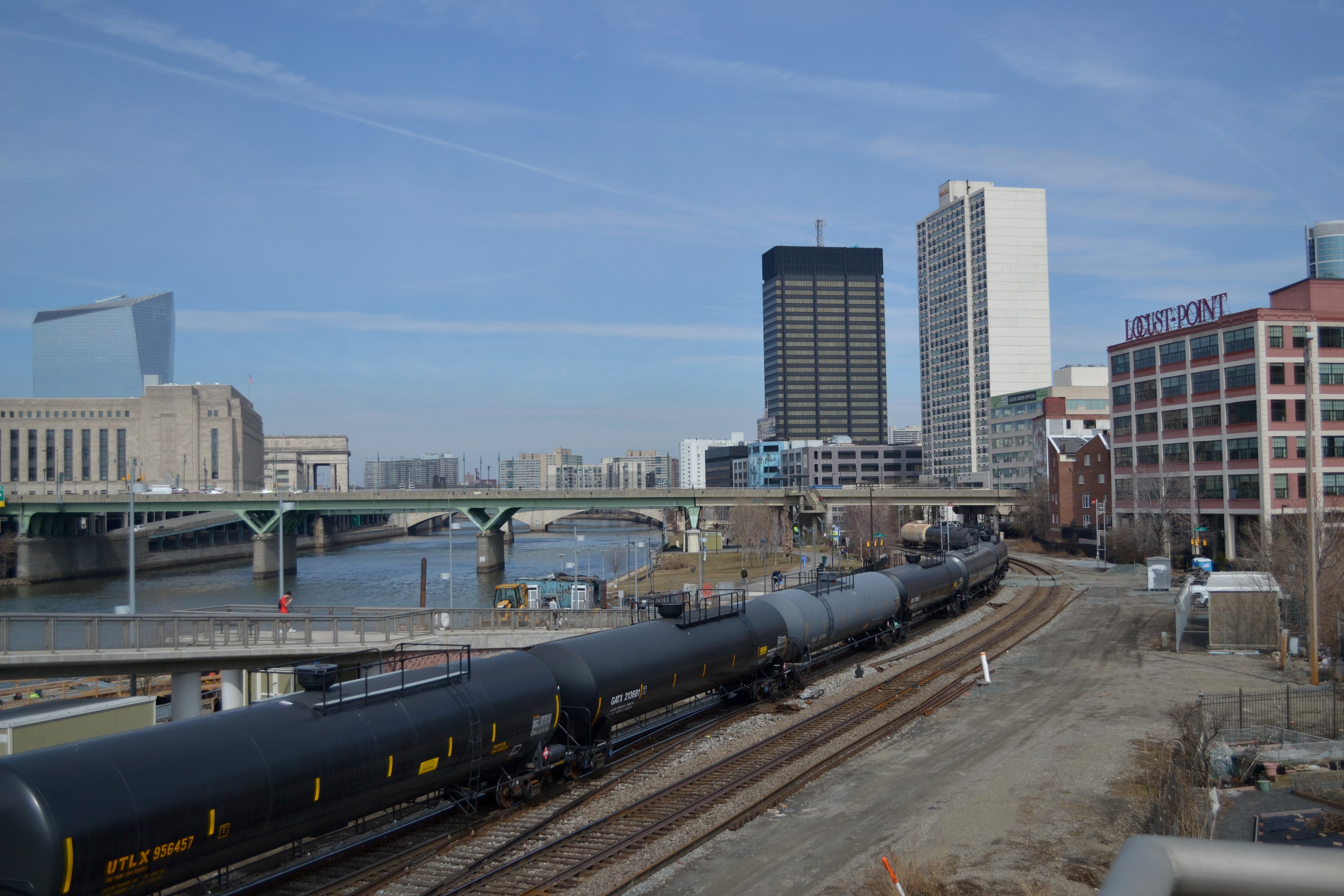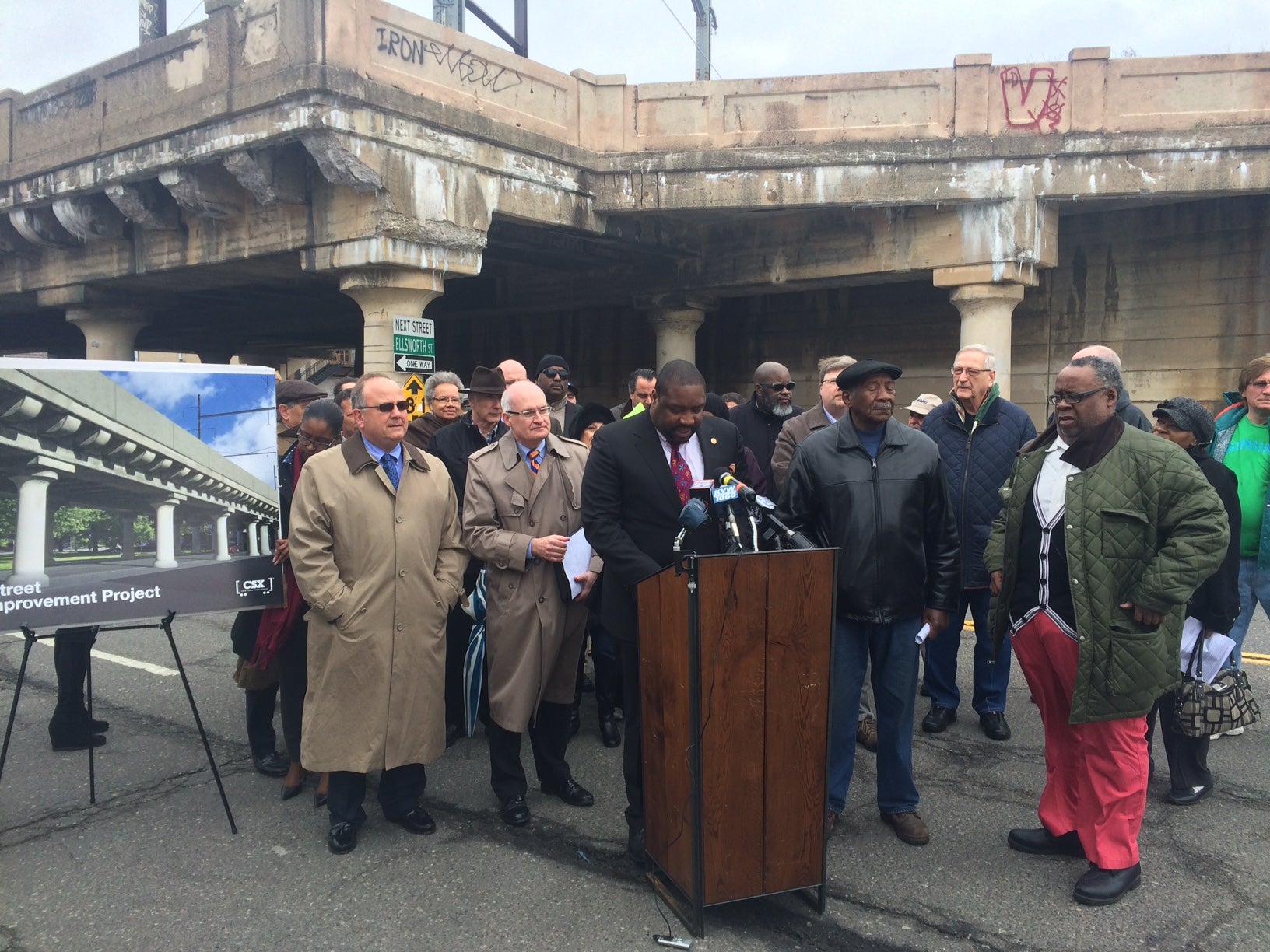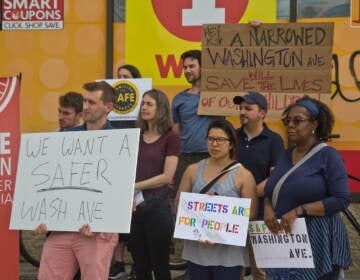CSX and Kenyatta Johnson announce plans to rebuild 25th Street viaduct
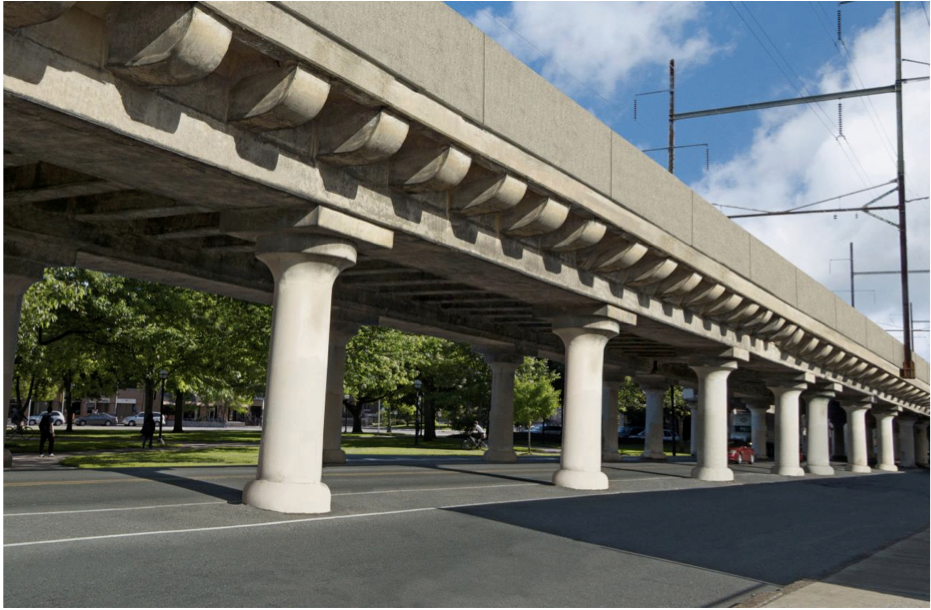
CSX Corporation and Councilman Kenyatta Johnson announced Wednesday a multiyear project to restore the condition and appearance of the long crumbling 25th Street Viaduct.
Councilman Johnson said the project was “the culmination of several years of advocacy.” But, as Johnson noted in his prepared remarks, the derailment of two freight trains carrying crude oil in Philadelphia, and the public outcry that followed, was a major motivating factor.
Following the January 20, 2014 train derailment that left 7 railcars dangling over the Schuylkill River, Johnson called for hearings on the safety of Philadelphia’s railroads carrying oil. One year later, another CSX train carrying oil derailed in South Philadelphia. Following that most recent accident, Johnson introduced a resolution urging the federal government to adopt stronger freight train regulations, and Councilwoman Blondell Reynolds Brown called for more hearings on the issue.*
Following the horrific 2013 oil train explosion that killed 47 people in a small Quebec town and another derailment and explosion in West Virginia in February, concerns over oil train safety in Philadelphia have been high. The bridge carries an average of 20 trains a day, many of them carrying the same type of crude oil that exploded in Quebec and West Virginia. According to a recent City Paper report, 710,000 Philadelphians live within a half-mile of freight lines carrying crude oil.
CSX is the largest freight railroad operating in Philadelphia.
Councilman Johnson said that the project would improve the safety of the drivers, bicyclists and pedestrians that travel underneath the bridge. While area residents will cheer having the restoration of the derelict deck over 25th Street, it’s unclear whether these repairs will do anything to help prevent future derailments.
Will Goetz, vice president of state government relations for CSX, said that rail defects, not bridge defects, were to blame for Philadelphia’s two derailments. The viaduct project will focus on improving drainage and replace the decrepit parapets, but CSX representatives did not say how, if at all, it would help avert derailments.
Goetz emphasized that the bridge is structurally sound and safe. “It is, in fact, overbuilt for its current use, having been designed to carry extremely heavy iron ore and coal trains.” The flaking walls and undersurface of the bridge were caused by problems with the over 85-year-old bridge’s drainage system. Rainwater on the viaduct is supposed to drain through the columns, but that system has been blocked for many years, causing water to spill over the sides. That, in turn, caused the cracking and crumbling concrete.
Johnson credited CSX for listening to the concerns aired at last year’s hearings, but emphasized the company’s responsibility to “do the right thing.”
“I’m a firm believer that if you are doing business in the city of Philadelphia, regardless of whether we have oversight or regulation or not, you will be held accountable,” said Johnson. Railroads are federally regulated, meaning that state and local governments are preempted by the Constitution’s “dormant” interstate commerce clause from imposing their own regulations. The federal regulations are considered weak by many critics, including Johnson.
“I will always use my city council seat as a bully pulpit to advocate and fight for constituents,” Johnson said.
CSX decided to restore the bridge following an “end-to-end inspection” late last year, said Goetz. That “multi-month” inspection only reviewed the 25th Street viaduct; it did not include the stretch of railroad where the January 2015 derailment occurred.
Rob Doolitte, spokesman for CSX, noted that the freight rail carrier performs weekly visual inspections on all its rails as well as periodic ultrasound inspections.
The rehab work will occur in four phases. Starting sometime in the next few weeks, the first phase will install a debris shield –a net – under the bridge to catch falling concrete. That step alone will cost $4 million and should be complete by the end of the year. The next three steps – repairing the drainage system, replacing the parapet walls, and resurfacing the underside of the bridge – will take somewhere between three to five years.
Final cost estimates are still pending as CSX finalizes the engineering details for the project, said Goetz.
Johnson represents the 2nd District, which surrounds the 1.2 mile-long bridge. The announcement comes at a fortuitous time for Johnson, who is facing a heated reelection challenge from real estate developer Ori Feibush.
CSX has created a website tracking progress on the project: www.csx25thStreetVIP.com.
*Correction: This paragraph originally said that Councilwoman Brown called hearings after the January 2014 derailment. Councilman Johnson called hearings then. Councilwoman Brown called for new hearings following the January 2015 derailment.
WHYY is your source for fact-based, in-depth journalism and information. As a nonprofit organization, we rely on financial support from readers like you. Please give today.



